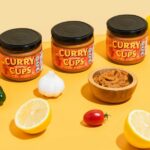Since 2015, when a single Instagram post could send shoppers scrambling for the “it” product, social media has remained a powerful force in shaping buying habits until today. But a new trend is emerging: deinfluencing — or maybe it’s just hype vs. honesty?
Social Media Hype vs. “Deinfluencing”
Social media hype has been a powerful force in shaping purchasing decisions across generations, but not equally. A new study by Society22 unveils fascinating insights into how age, gender, and platform use influence susceptibility to online buzz.
While most US consumers (52%) haven’t succumbed to “hype shopping,” specific demographics are more vulnerable. Women, for instance, are more likely to be swayed than men (47% vs. 35%) into this trend.
However, the generational gap is the most striking factor. A whopping 70% of Gen Z/iGen (1997-2012) readily admit to falling prey to social media hype, followed by nearly half (49%) of Millennials (Gen Y). This influence dips significantly with age, with only 36% of Gen X (1965-1980) and a mere 20% of Baby Boomers (1946-1964) confessing to such purchases.
The time spent scrolling also plays a significant role. Those glued to social media for 5-6 hours daily are more susceptible to hype (61%) compared to those using it for 1-2 hours (35%). Interestingly, TikTok emerges as the ultimate hype machine, with 64% of its users admitting to being influenced, compared to 45% for YouTube and Facebook.
But the influencer game isn’t always about creating hype. The study reveals the rise of “deinfluencing,” where negative online reviews or criticism from influencers deter consumers from buying products. In fact, over a third (36%) of US consumers have actively avoided a purchase due to deinfluencing.
Unsurprisingly, Gen Z and Millennials are the most susceptible to deinfluencing, with 56% and 42% being swayed, respectively. And again, this influence wanes with age, affecting 34% of Gen X and only 19% of Baby Boomers.
These insights offer valuable lessons for brands. To effectively navigate the complex ecosystem of consumer behavior, a tailored approach is and has always been a must. While social media content creation is vital for reaching younger generations, traditional media channels like TV, radio, and print remain relevant for targeting older consumers.
Understanding how different demographics interact with social media is key to crafting successful marketing strategies that resonate with the right audience, maximizing the potential for positive influence while mitigating the risk of deinfluencing.
What’s the Motivation Behind the Deinfluencing?
Multiple factors fuel the deinfluencing movement. Some creators genuinely feel misled by inauthentic endorsements, aiming to protect their audience from disingenuous marketing. Others leverage the trend to establish themselves as “relatable” personalities who amplify “their followers’” voices, building trust through critical evaluations. Regardless of the motivation, deinfluencing raises questions about consumer trust and transparency in the influencer economy. It challenges the carefully curated online personas and sponsored content that have dominated social media shopping for years in the same way it presents a unique challenge for brands — maintaining relevance and appeal while facing increased scrutiny and skepticism. It’s a delicate dance between acknowledging concerns, staying true to brand identity, and fostering trust with a critical audience.
How Brands Can Navigate the Deinfluencing Trend:
- Transparency is Key: Be upfront about product limitations, address criticism directly, and don’t shy away from difficult conversations. Transparency fosters trust and shows you’re listening.
- Genuine Partnerships: Ditch forced sponsorships and seek influencers who genuinely align with your brand values and mission. Encourage them to share honest experiences, even if they raise issues. This authenticity resonates with audiences.
- Focus on Impact, Not Just Hype: Move beyond empty promises and flashy campaigns. Showcase your product’s genuine benefits and positive impact, focusing on quality and substance. Let actions speak louder than words.
- Be Proactive, Not Reactive: Don’t wait for deinfluencers to call you out. Proactively address potential concerns with clear communication and showcase your commitment to improvement.
- Echo Diverse Voices: Partner with a range of influencers, including micro-influencers and diverse communities, to represent different perspectives and avoid narrow portrayals.
- Empower Your Community: Encourage user-generated content and open dialogue. Let your customers be ambassadors, sharing their genuine experiences and fostering trust within the community.
Remember, deinfluencing isn’t just about negativity; it’s about demanding authenticity and responsibility. Like makeup artist Stephanie Nicole, who didn’t just debunk unrealistic beauty standards perpetuated by certain brands, she also offered alternative product recommendations and makeup techniques that empowered her audience to achieve natural beauty without breaking the bank. Similarly, sustainability advocate Meagan Francis didn’t simply criticize “fast fashion” practices; she highlighted ethical and sustainable brands while educating her followers about the environmental and social impact of their clothing choices.
These examples demonstrate how deinfluencing can drive positive change when used ethically and responsibly. It’s not calling out negativity but offering informed alternatives and empowering consumers to get what they really deserve. As Paula Shugart once said during her resignation at the grand coronation stage of the Miss Universe 2023, “We all must commit to demanding the best of each other as we go forward in these times.”
Moving forward, it’s important to remember that influencers play diverse roles on different platforms. While platforms like Instagram may favor visually appealing trends, YouTube often fosters in-depth reviews and discussions where deinfluencing thrives. Understanding these nuances is crucial for brands when choosing influencer partners. A beauty blogger on YouTube might delve into detailed product comparisons, while a fashion influencer on Instagram might showcase sustainable outfit options. Tailor your influencer partnerships to the platform and the type of content that resonates with your target audience.
Ultimately, responsible marketing practices hold the key to navigating the deinfluencing wave. Brands prioritizing transparency, ethical production, and genuine connections with their audience will establish lasting trust, regardless of fleeting trends. Armed with information and a critical eye, consumers can navigate the online shopping landscape with more informed choices. After all, the deinfluencing trend might not be the bubble-burster in the social shopping industry entirely, but a wake-up call for brands and consumers alike.
Published by: Martin De Juan

















